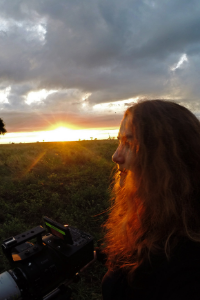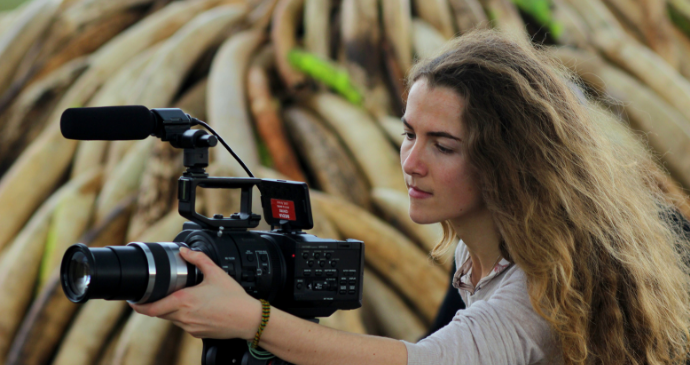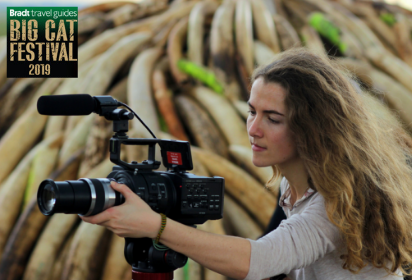We’re really pleased to be joined at the Big Cat Festival by Tania Esteban who has worked on natural history documentaries at the BBC, including Big Cats. Tania will be tellng us how to get into wildlife film-making in the Education Centre, and giving us tales from behind the scenes at a Big Cat Shoot onstage in the Ondaatje Theatre.

A bilingual zoologist, wildlife camerawoman and researcher, Tania Esteban has worked on blue-chip natural history documentaries at the BBC (including Big Cats and Wild Cities), online projects (Our Blue Planet) as well as several other indies (A Year in the Wild: Canada).
Tania is also a fully qualified CAA drone pilot. She is currently working at Silverback Films on a new 8K BBC landmark behavioural natural history series and continues to shoot her own short independent films for Panasonic, Sennheiser and Atomos.
Her Masters film, A Lion’s Tale, featuring Virginia McKenna and Will Travers of the Born Free foundation, was nominated for a student BAFTA.
We spoke to Tania ahead of her appearance at the Big Cat Festival to talk all things wildlife filmaking:
What’s involved in wildlife filmmaking/documenting big cats?
I’ve always been passionate about natural history (big cats in particular) from a very young age. For me wildlife filmmaking is one of the most powerful tools we can use to help us communicate about nature and life on our planet. And whether we’re researching, filming or editing, every decision ultimately feeds back to the powerful premise of storytelling.
Technology will also always be an innovative tool to help engage audiences through stunning visuals and fluid movement that encapsulates and moves them emotionally to connect with the on-screen animal characters. Movement using the latest camera technology is part of how these masterful visual storytellers create the feeling of immersion and adds a dynamic angle to a story – that includes gimbals, drones, timelapse.
Teams spend months in pre-production, researching and planning each story sequence and how they all connect. Comparatively speaking, much more time is spent at this stage of the production process than any other (the others include the actual filming – production – and then post-production editing/grading/music scoring stages).
Stories have the power to inspire a single person, but they also have the potential to influence the way we live in our societies, and can even have a global impact and touch millions of lives around the world.
Your breakout session is about how to break into the wildlife filmmaking industry – what would you say are the key components of getting your foot in the door?
There are several different routes to get into this industry – excitingly, everyone’s journey will be different. First thing I would say is get out there and produce your own films! Do your research and spend time outdoors observing your cat in order to truly appreciate and capture the nuances of it’s behaviour.
Equally watching wildlife films/looking at others work from all genres will help develop your own creative eye and style. Talk to producers about getting work experience and share/develop your film ideas with them– they are worth their weight in gold. Being able to tell a story is crucial as well as getting your audiences to care about your onscreen characters.
In terms of camerawork, learning to shoot for the edit and how to build sequences that help audiences engage and empathise with your big cat characters is key. However, most importantly – is to be passionate. Wildlife filmmaking is very much a state of mind and lifestyle choice. Find your niche and love working and collaborating with others – and hopefully you can also inspire others to care about our magnificent planet and its felines!

Do you have a favourite moment from filming big cats?
One very special moment was during my first shoot in Kenya filming lions in Meru National Park – the resting place of the infamous Elsa the lionesses from the Born Free story.
We had been out in the bush for just over a week and hadn’t spotted a single lion…and although a terribly cliché, on the evening of the very last day in absolutely perfect golden light conditions, we came across a small pride with two very young cubs. I leapt up onto the top of the vehicle, slipped the camera rig onto the tripod, focused and held my breath to try and contain my excitement.
The wild lion cub then peered through a thicket and looked straight down the lens at me with a look of sardonic curiosity – pure cat magic!
